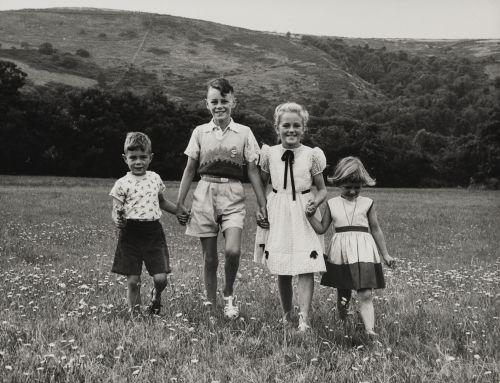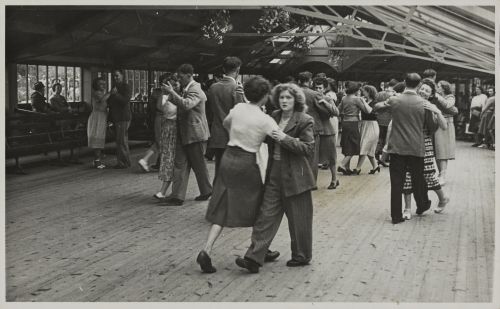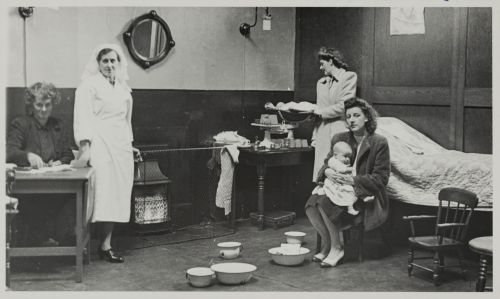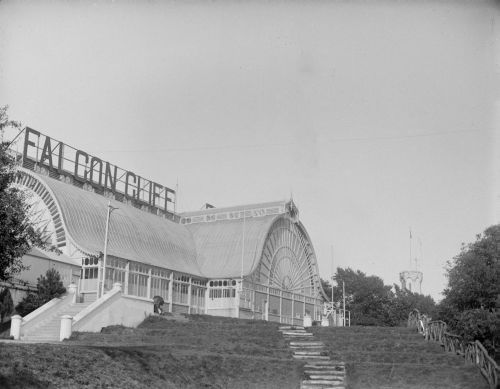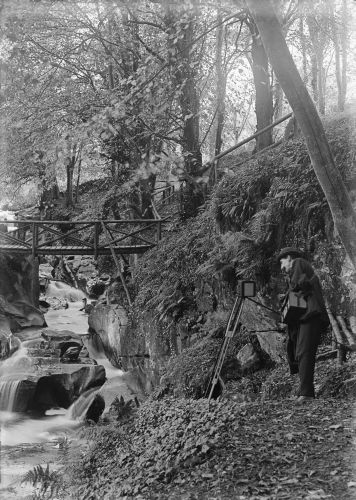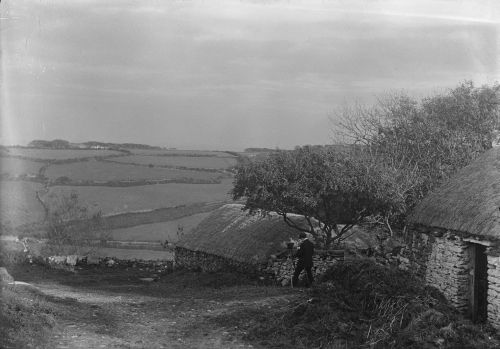Introducing five digitised photographic resources now on iMuseum
Over 300 charming, informal photographs of children and young people of Ramsey and the north are now available for viewing. These were taken in the 1950s and ’60s by Ramsey Grammar School teacher Ernest Webb (1899-1974). A keen amateur photographer, Webb specialised in pictures of children and landscapes. His images show his skill in putting the children and young people at ease while capturing beautifully composed portraits.
The portraits contrast with the formal images taken in Victorian and Edwardian studios. With toys and school equipment used as props, Webb’s photographs represent aspects of childhood and schooling as well. Also present are wedding photographs taken by him for ex pupils. For more information about these resources including links to images see this overview at PG/13662.
During May 2020 nearly 1,800 photographs of C W Airne were released. These were taken, commissioned or acquired by Clement Wallace Airne (1889-1967), predominantly in the 1940s. One photographer is known to have been Matthew Hannah.
Airne images include domestic, public, industrial, farm and other buildings, castles, churches, keeills, bridges, landscapes, coastline and coastal erosion. Ronaldsway airport, Rushen Abbey, archaeological sites and excavations and military installations such as RAF Station Cranstal and Dalby radar station are documented. Premises include Mount Murray farmyard and chapel, Creggans farm, Balladoole house, Castletown brewery, Sulby and Glen Auldyn woollen mills. For more information about the Airne resources including links to images see this overview of PG/13540.
In 2019 three other deposits from the MNH photographic collection were digitised to improve access via iMuseum. They showcase the photography, often on glass plates, of William Cavanagh, Francis Southward and Louis Taggart.
William Cavanagh (1862-1952), another amateur photographer, lived in New Ross, Co Wexford, Ireland. With his wife Maria he holidayed periodically in the Isle of Man between 1901 and 1918.
Cavanagh’s images can be explored via this link to PG/13607. His photography includes many scenes in Douglas, its promenade, shore and harbour. He recorded attractions and features such as the Douglas Head ferries, Douglas Head incline railway, Warwick Tower, Falcon Cliff, Palace and Derby Castle amenities, Buxton’s Pierrot Village and Tea Rooms, the Punch and Judy shows and donkeys on the beach.
People are pictured going about their business. Outside Douglas Cavanagh’s subjects include the Laxey Wheel and Laxey station, Garwick halt, Groudle railway and polar bears in Groudle glen.
Francis Southward (1836-1921) was a member of the Southward family which ran Sulby Glen Woollen Mills. His images of Sulby and Ramsey from 1890 to 1917 capture family, tradesmen and friends, Ramsey regatta, Ramsey baths and some early motorcar racing, For more details and to search the Southward images see PG/7850
Louis Taggart (1867-1941) was born in Liverpool to Manx parents and was raised on the island where he learnt photography, initially as a photographer’s assistant. His images record the new sunken gardens and redeveloped promenade in Douglas in the 1930s, Douglas harbour, country landscapes, glens and buildings. To learn more and view Taggart’s images use this link to PG/13630
If you can supply additional biographical information about any of these featured men (other than what appears in the biographical profiles at their respective PG entries) we would be pleased to learn more via library@mnh.im.
The preparatory work readying these resources for iMuseum was greatly helped by volunteers in the MNH Library and Archives. For their time, dedication and contribution Manx National Heritage extends its warmest thanks.
The Webb, Airne, Cavanagh, Southward and Taggart resources now on iMuseum join those of another notable photographer, John Frowde (1871-1964). To accompany his images Frowde wrote anecdotal captions which surprise, entertain and lament the passing of a part of Douglas around North Quay which changed considerably after extensive demolition work circa 1934. He captured the network of alleyways and buildings and something of the essence of the people who called it home. For an overview of the Frowde images see PG/8224
Frowde writes, ‘The big house, 11 Seneschal Lane, still partly hidden by a wall and the remains of No 12 just taken down. Spittal’s house Right, next due for the house-breakers. The closing of the many large houses in this area, gave the ‘mob beg’ of this district a chance of indulging in an orgy of window smashing they never had before, & may never have again. That they took full advantage of the situation is clearly evident in many of these winter demolition snaps’.
Wendy Thirkettle
MNH Archivist
Blog Archive
- Edward VII’s Coronation Day in the Isle of Man (9 August 1902)
- Victoria’s Coronation Day in the Isle of Man (28 June 1838)
- Second World War Internment Museum Collections
- First World War Internment Museum Collections
- Rushen Camp: Second World War Internment on the Isle of Man
- Hutchinson, Onchan & Peveril Camps: Second World War Internment on the Isle of Man
- Douglas Promenade: Second World War Internment on the Isle of Man
- Mooragh Camp: Second World War Internment on the Isle of Man
- Sculpture collection newly released to iMuseum
- Fishing Folklore: how to stay safe & how to be lucky at sea
- News from the gaol registers project: remembering the men and women who served time in Castle Rushen
- Explore Mann at War: stories of Manx men, women and children in conflict
- We Will Remember Them: Isle of Man Great War Roll of Honour (1914-1918)
- Dr Dave Burnett explores Manx National Heritage geology collection
- Unlocking stories from the Archives: The Transvaal Manx Association
- Login to newspapers online: step-by-step guidance
- ‘Round Mounds’ Investigation Reveals Rare Bronze Age Object

